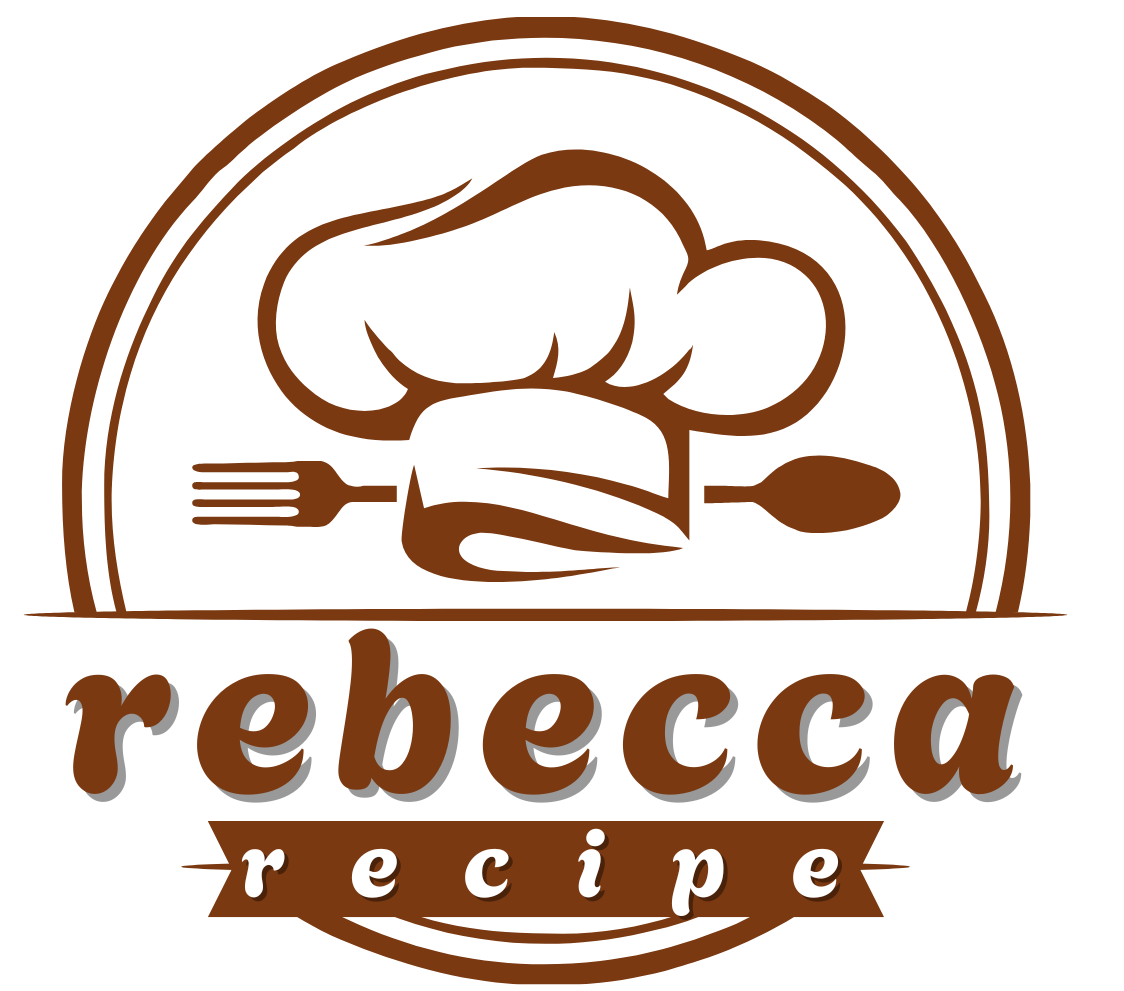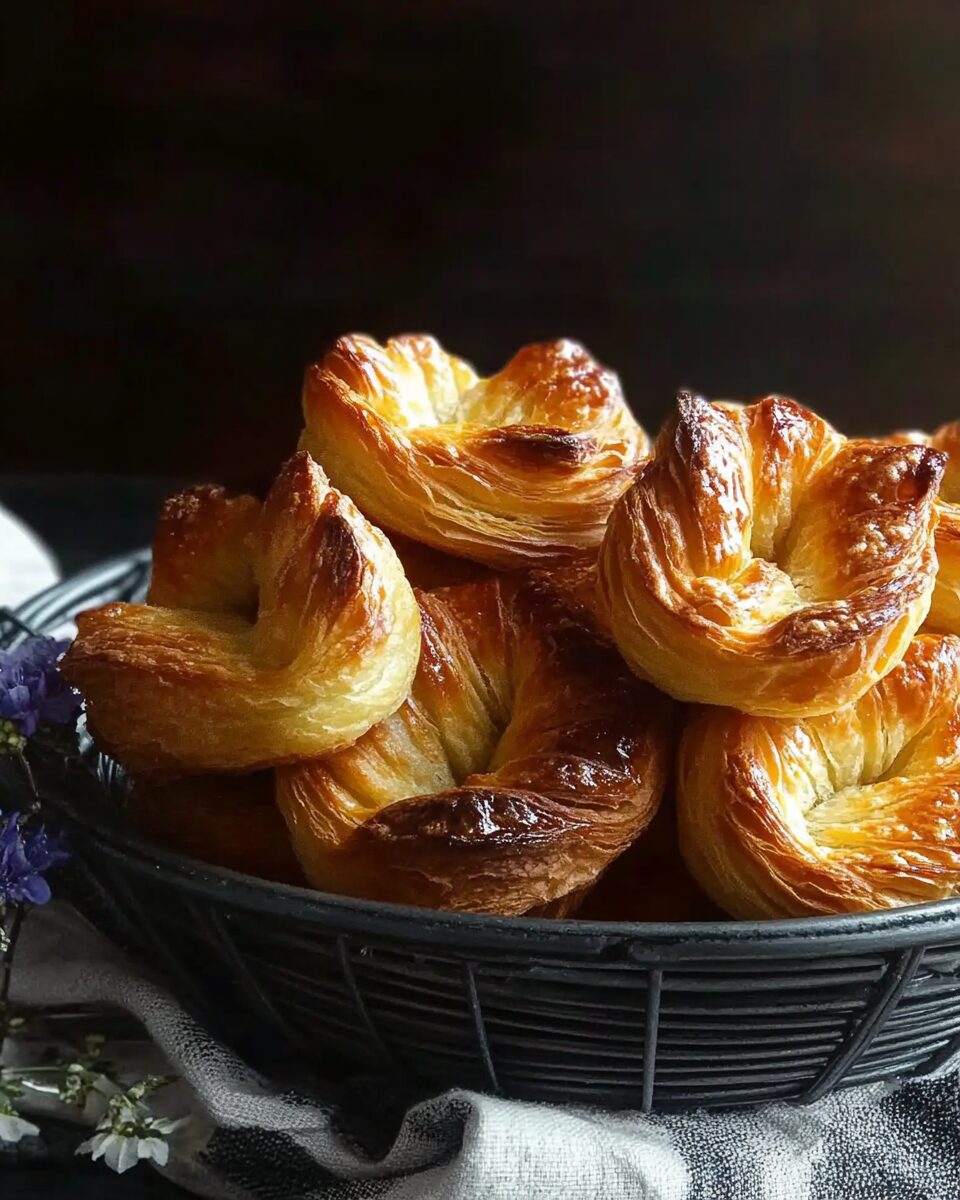Kouign-Amann (pronounced “queen ah-mahn”) is a rich, buttery pastry originating from Brittany, France. Known for its caramelized, crispy exterior and soft, flaky layers within, this indulgent treat is a cross between croissant dough and puff pastry, sweetened with sugar and enriched with butter. The name translates to “butter cake” in Breton, and it lives up to its reputation with a delicious balance of sweetness, crunch, and a melt-in-your-mouth texture.
Full Recipe:
Ingredients
- 2 teaspoons active dry yeast
- 1 cup warm water (100°F/38°C)
- 2 cups all-purpose flour
- 1 teaspoon kosher salt
- 1 tablespoon unsalted butter, softened
- 1 cup cold unsalted butter, cut into thin slabs
- 1 cup white sugar, divided
Directions
-
Dissolve yeast in warm water; let sit until foamy (about 5 minutes).
-
Mix flour, salt, and softened butter in a bowl. Stir in yeast mixture to form dough. Knead until smooth.
-
Cover dough and let rise for 1 hour.
-
Roll dough into a square, place cold butter slabs in the center, fold dough over, and roll out again.
-
Fold and roll dough several times, chilling as needed, to create layers (lamination).
-
Sprinkle sugar over dough, fold and roll to incorporate.
-
Cut dough, shape into rounds, and place in greased muffin tins. Let rise 30 minutes.
-
Bake at 400°F (200°C) for 25–30 minutes, until golden and caramelized.
-
Let cool slightly before removing from tins.
Nutrients
- Calories: 320
- Total Fat: 22g
- Saturated Fat: 14g
- Cholesterol: 60mg
- Sodium: 180mg
- Total Carbohydrates: 26g
- Dietary Fiber: 1g
- Sugars: 12g
- Protein: 3g
- Calcium: 10mg
- Iron: 1mg
Origins and Regional Importance
Kouign-Amann hails from Douarnenez, a coastal town in Brittany, France, where it was first baked in the 19th century. Legend has it that it was created by accident when a baker, running low on ingredients, folded sugar and butter into bread dough. The result was a caramelized, flaky treat that quickly gained popularity throughout the region. Today, it stands as one of Brittany’s most iconic culinary contributions. Traditionally, Kouign-Amann was made in large rounds, sliced like cake. However, the individual-sized versions seen in modern patisseries have become more popular for their convenience and enhanced caramelized crust.
Artistry in Simplicity
Though Kouign-Amann contains only a handful of ingredients—flour, butter, sugar, water, and yeast—its preparation requires precision and patience. Much like croissants, the dough is layered through a process called lamination. This creates fine, airy layers within the pastry that rise and crisp during baking. What makes Kouign-Amann stand out is the addition of sugar during the lamination process, which caramelizes as it bakes, giving the pastry its signature golden color and sweet, crunchy exterior. The combination of soft inner layers with a shatteringly crisp crust is a hallmark of a well-executed Kouign-Amann.
The Rise of Kouign-Amann in Global Baking Culture
Once relatively unknown outside of France, Kouign-Amann experienced a surge in international popularity during the 2010s. Renowned bakeries in cities like New York, San Francisco, and Tokyo began showcasing it in their pastry cases. Food critics and celebrity chefs sang its praises, calling it “the fattiest pastry in all of Europe” with great affection. Its popularity was further fueled by baking shows and online food media, which brought it into the kitchens of adventurous home bakers. Despite its intricate preparation, Kouign-Amann became a symbol of refined indulgence and a test of baking prowess.
Flavor Profile and Texture
The flavor of Kouign-Amann is rich and complex despite its minimal ingredients. The dominant taste is buttery and sweet, with hints of salt that enhance the overall profile. The caramelization of sugar during baking adds a deep, toffee-like undertone that complements the pastry’s airy crumb. The texture is equally compelling—each bite starts with a satisfying crunch, followed by a melt-in-your-mouth tenderness. The contrast between crispy edges and soft interior layers makes Kouign-Amann an experience as much as it is a food.
Baking Challenges and Mastery
Creating Kouign-Amann at home can be challenging due to the lamination process and the delicate balance of sugar and butter. Bakers must maintain cold butter during folding, prevent sugar from burning, and manage rising times with precision. However, the sense of accomplishment that comes from successfully baking Kouign-Amann is immense. It teaches important skills like dough handling, temperature control, and patience. Many consider mastering this pastry a rite of passage in the world of artisan baking.
Kouign-Amann vs. Other Laminated Pastries
Kouign-Amann is often compared to croissants and Danish pastries due to its laminated structure, but it has several distinguishing features. Croissants are lighter and more focused on the airy rise, often lacking the caramelized crunch that defines Kouign-Amann. Danish pastries tend to be filled with fruit or custards, while Kouign-Amann relies solely on butter and sugar for its flavor. The unique balance of sweetness, saltiness, and texture places Kouign-Amann in its own category—a buttery indulgence with a refined edge.
Modern Interpretations and Variations
While the traditional Kouign-Amann is timeless, modern bakers have embraced creative variations. Some incorporate flavors like:
-
Vanilla bean or cardamom for subtle warmth
-
Citrus zest, especially orange or lemon, for brightness
-
Fillings like chocolate ganache, fruit compote, or cream cheese
-
Savory adaptations using herbs and cheese
These innovative twists maintain the essence of Kouign-Amann while introducing fresh appeal. However, purists often argue that the classic version, with its perfect balance of sugar and butter, needs no embellishment.
Serving and Presentation
Kouign-Amann is best served slightly warm, allowing the butter to soften and the sugar glaze to glisten. It pairs beautifully with strong coffee, espresso, or a glass of dry cider—a nod to its Breton roots. When served in fine patisseries, it’s often presented as an individual round with a glossy, caramelized top. For a more rustic touch, home bakers may slice a larger round cake into wedges. Garnishing is usually minimal to let the pastry’s natural shine and texture speak for itself.
Cultural Symbolism and Identity
In Brittany, Kouign-Amann is more than just a pastry—it’s a source of regional pride. Much like the baguette or the croissant, it serves as a cultural ambassador of French baking excellence. Its roots in rural baking traditions and its rise to international fame illustrate the power of simple ingredients elevated through skill and tradition. It’s not uncommon to see Kouign-Amann featured at festivals and baker competitions in France, and the original Douarnenez recipe is often revered as the gold standard.
Popularity in Modern Cafés and Bakeries
Today, Kouign-Amann is a star attraction in bakeries across the globe. From artisanal coffee shops in Portland to luxury patisseries in Tokyo, this pastry commands attention. Its unique texture and flavor profile stand out in display cases, drawing in both curious first-timers and loyal fans. For cafés and bakeries, offering Kouign-Amann is also a mark of distinction—it suggests a dedication to craft and a willingness to tackle more complex baking techniques.
Storing and Shelf Life
Kouign-Amann is best enjoyed fresh, ideally on the day it’s baked. However, if you must store it:
-
Keep it at room temperature in an airtight container for up to 2 days
-
Reheat briefly in the oven to revive its crisp exterior
-
Avoid refrigeration, which can dull its texture
Because of its high butter and sugar content, the pastry holds up fairly well, but the initial crispness will fade over time.
Nutritional Considerations
Kouign-Amann is undeniably rich—after all, it’s named for its butter content. A single serving can range from 300 to 400 calories, with a significant portion coming from fat and sugar. While it’s not intended as a daily indulgence, its small size makes portion control manageable. For those seeking a lighter version, reducing sugar slightly or using cultured butter for added depth may be appealing alternatives. Some bakers experiment with whole grain flours, but such substitutions may affect texture and caramelization.
Learning to Appreciate the Process
Perhaps more than any other pastry, Kouign-Amann invites bakers and eaters alike to appreciate the process. From the rhythmic folding of dough to the tantalizing aroma as sugar caramelizes in the oven, each step is a reminder of how effort and patience can transform humble ingredients into something extraordinary. It’s a slow food experience—a contrast to our fast-paced world—and that’s part of its enduring allure.
Conclusion
Kouign-Amann is a testament to the artistry of French baking. Its rich history, exquisite texture, and elegant simplicity make it a standout in the world of pastries. Though it requires skill and attention to detail, the result is a pastry that rewards every bite with layers of flavor, crunch, and buttery satisfaction. Whether you’re a seasoned baker or a pastry enthusiast, Kouign-Amann is worth the effort—not just for the taste, but for the journey it offers into the heart of traditional European baking.

